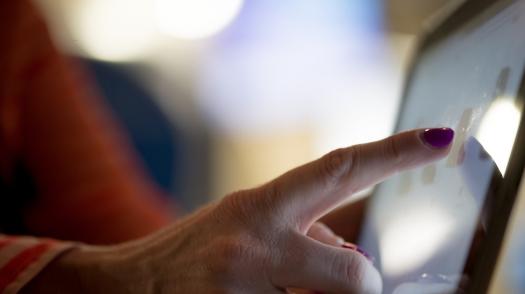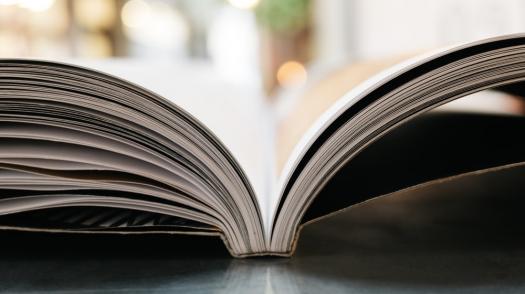Healthcare professionals have different methods of trying to work out what’s going on. Examinations and assessments may seem intrusive and stressful, but the aim is to determine the best course of action. Families often have to take in a lot of information, during what is an already stressful time.1
Medical terms you might hear
The Glasgow Coma Scale
The word ‘coma’ can be terrifying for a parent. But this scale is actually a standard observation professionals use to establish basic facts.
Children are given a slightly different ‘test’ to adults. It works through a set of questions (‘what is your name?’, ‘what day is it?’). A child might also be asked to wiggle their toes or hold their fingers up. The healthcare professionals may also do some tests to find out how easy it is for the child to open their eyes, speak and move.
A small light will be shone in their eyes to test their reaction. Children are given a ‘score’. A score of 3 is when the child is unconscious and cannot respond at all. The scale goes up to 15, which is when the child is fully awake and aware.
This kind of assessment might take place at the scene of an accident. It will also take place at regular intervals at the hospital to check progress.2
X-ray
In cases of a head injury an X-ray might be taken to see if the skull is broken or fractured. This is likely to happen soon after arrival at accident and emergency. You may be able to stay in the room with your child.
CT scan3
The ‘CT’ stands for Computerised Tomography. A CT scanner does a similar job to an X-ray machine but at a much more detailed level. Rather than sending out just one ray the CT scanner sends lots of beams from different directions.
The child lies very still on a bed as they’re put into the machine. It looks like a large ring doughnut and while the scan is entirely painless, the noise and enclosed space may be frightening for children. You may be able to talk to your child during this, via an intercom system.
The result is a very detailed image of the brain. Healthcare professionals will be able to talk you through the results.
MRI scan
The ‘MRI’ stands for Magnetic Resonance Imaging. Instead of X-rays the MRI scanner uses magnetic and radio waves to build up a picture of the brain.
It gives a very detailed image, but it is different from a CT scan in only showing the brain from one angle. Children are sometimes given an anaesthetic because it’s important they remain completely still during the scan. Like the CT scanner, the MRI scanner is also a little claustrophobic. It’s also quite noisy.4
Angiogram
This is a test to look at the blood vessels in the brain. Using a small tube, dye is put into an artery that takes blood to the brain.
A local anaesthetic will be used to lessen the pain. The dye makes the blood vessels in the brain easy to see on an X-ray so doctors can see if they’re damaged. This process can take between one and three hours.
ICP monitor
An intracranial pressure monitor is a small tube placed just on top of or in the brain through a tiny hole in the skull. This is done under general anaesthetic. The aim is to find out how much pressure has built up inside the skull.
EEG
An electroencephalograph is a test to measure electrical activity in the brain. Patches called electrodes are applied to the head with sticky pads to measure activity.5
Intracranial pressure6
The skull is almost fixed in size when we get past 18 months old.7 So there isn't room for swelling or bleeding in the brain. When the brain swells or bleeds the result is that there is more pressure inside the skull. This is raised intracranial pressure.
If there is more fluid in this small space, it can push on the brain and cause damage.8 This may also lead to other complications. The flow of blood around the brain might be interrupted. Cerebrospinal fluid (the nourishing liquid which flows around the brain) may also be affected.9
Doctors will monitor intracranial pressure closely10 and there are measures they can take to control it. A ventilator can help increase the flow of oxygen to the brain.
Alternatively, doctors might control the amount of water and salts going into the body to prevent too much fluid in the brain.
If intracranial pressure builds and becomes too high doctors may attempt to bring it down. They may drain some fluid from the brain, or in some circumstances, remove a piece of the skull (known as a bone flap) to relieve the pressure.
A ‘shunt’ may also be used. This is where a catheter (a small tube) is used to drain cerebrospinal fluid from the brain into another part of the body.
In some circumstances doctors may choose to ‘deeply sedate’. This is where a coma is induced with the aim of reducing stress to the child and managing the intracranial pressure.
Treatments
Each child responds differently to their brain injury.11 But there are some broad things we can say about the aims of the healthcare professionals. When a child is first taken to hospital, it is often referred to as acute care.
The main goals here will be to:
- Manage pain and anxiety
- Control the level of pressure in the skull
- Stop any bleeding and remove blood clots
- Make sure there’s enough blood and oxygen going to the brain
- Make sure the child is safe12
The treatment each child receives will be unique to their circumstances. But there are some common themes.
Medication13
Medication might be used for a number of reasons. It might be to control seizures or the pressure in a child’s skull. Antibiotics might be used to prevent or treat infections.
Painkillers are used to make a child feel more comfortable. If a child is in pain, it can lead to raised intracranial pressure. Some medicines are used to prevent the onset of pain.
Exercises and splints14
It might be hard for a child with a brain injury to move their limbs as much as they need to. If our muscles and joints are out of use for a while, they can become tight (these are called contractures). Exercises help prevent this and splints may be used to keep muscles stretched.15
Medical procedures
The below list explains medical procedures that can be used in the treatment of brain injuries, which some readers may find disturbing. You can always come back to this section at another time, if you are not ready to read.
Burr holes
A small hole is opened in the skull to remove blood clots.
Craniotomy/bone flap removal
A craniotomy is where the skull is opened to relieve pressure that has built up. If the brain has swollen sometimes a piece of bone is removed from the skull to relieve the pressure. A dressing will wrap the head so there’s no need for concern about a child’s appearance to family and other visitors. The piece will then be replaced later or a plate will be inserted.
Ventricular drain
A small tube is placed inside the ventricles of the brain. These are cavities which contain cerebrospinal fluid (the nourishing liquid that circulates around the brain). The cavities are sometimes temporarily drained to relieve pressure inside the skull. Sometimes a hollow bolt or screw is inserted into the skull. Through this a sensor monitors intracranial pressure. It might also be used to drain cerebrospinal fluid.16
Tracheostomy
A tracheostomy might be performed if a child is having trouble keeping fluid out of their lungs, trouble breathing, or they have been on a ventilator for some time. An opening is created at the front of the windpipe (known as the trachea) and a tube is inserted through the opening. As well as helping a child to breathe, the tracheostomy can be used to remove any unwanted fluids produced by the lungs or the throat. A tracheostomy can be particularly stressful for a child, as it is intrusive and they may be unable to talk for some time after the operation has been carried out.
Getting rid of fluids
Staff may use a machine to draw fluid from the lungs. This is in order to prevent pneumonia. They might use a tube to suck the fluid from the lungs. Similarly, a tube may be placed in the stomach to remove fluids.
Other forms of treatment include:
Fluid restriction
The brain is like a sponge and is more prone to swelling if there is a lot of water in the body. Sometimes a child might have fluids restricted for a limited period.17
Positioning
It may be necessary for the child’s bed to be elevated. The idea is that gravity helps the fluids in the brain to drain. It also prevents fluids from the stomach coming up the oesophagus (reflux), which can be very painful.18
Ventilator
This machine will either assist children with their breathing or do their breathing for them. And the more oxygen there is in the brain, the smaller the blood vessels are.
Again, this may help bring pressure inside the skull under control.
Nutrition
Children need lots of energy after a brain injury and so nutrition is essential. If a child is unable to swallow, or their stomach has shut down, food might be supplied through a tube. This will be either through their nose and into their stomach (a naso gastric tube), or through a small tube directly in to the stomach (a gastrostomy).These liquid meals are called ‘formulas’.
Toileting
Children may not have control over their bladder or bowels. A catheter may be used14, which is a tube that runs into the bladder. Sometimes specialised pads or nappies might be used.


